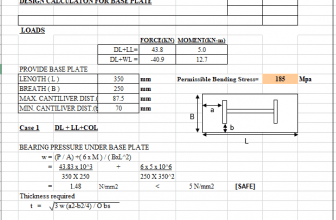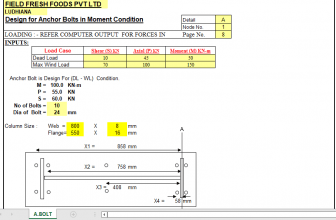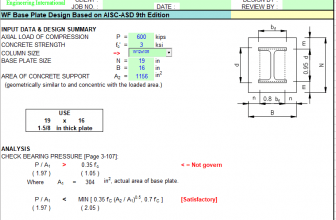
P-Delta effect, also known as geometric nonlinearity, involves the equilibrium and compatibility relationships of a structural system loaded about its deflected configuration. 1) P-D effect, or P-“small-delta”, is associated with local deformation relative to the element chord between end nodes. 2) P-D effect, or P-“big-delta”, is associated with displacements relative to member ends. Initial P-Delta analysis may be specified in ETABS Define P-Delta Options and using either of the following two methods:
1) Non-iterative Based on Mass, in which load is automatically computed from the mass at each level. The benefit of this non-iterative method is that P-Delta may be considered in load cases which do not specify gravity load. When gravity load is specified, we generally recommend the Iterative 2) Based on Load Cases method. Iterative Based on Load Cases, in which load is computed from a specified combination of static load cases, then known as the P-Delta load combination. When the iterative method is selected, two additional options become available : Convergence Tolerance (Relative), Iteration is used to make sure that equilibrium is achieved at each step of the analysis. P-Delta Load Combination, in which users may specify the single load combination for the initial P-Delta analysis. For example, suppose that a building code requires the following load combinations: (1) 1.4 dead load (2) 1.2 dead load + 1.6 live load (3) 1.2 dead load + 0.5 live load + 1.3 wind load (4) 1.2 dead load + 0.5 live load – 1.3 wind load (5) 0.9 dead load + 1.3 wind load (6) 0.9 dead load – 1.3 wind load A P-Delta load combination of 1.2 DL + 0.5 LL is typically conservative when considering P-Delta effect due to the overall sway of a structure.
Combinations (3) and (4) will accurately capture this effect, while (5) and (6) should be conservative. Combinations (1) and (2) have no lateral load, therefore P-Delta effect should not be of concern. Please notice this is a non-linear static case and should be performed only after the model runs without any numerical issues for simple linear cases and results of basic variables such as deformations are within realistic or expected values. How to include P-Delta effect in analysis The two primary means for including P-Delta effect in nonlinear analysis include: 1) For each load combination, create a nonlinear analysis case which includes the P-Delta geometric-nonlinearity parameter. 2) For the gravity loads anticipated, create an Initial P-Delta Analysis case which includes the P-Delta geometric-nonlinearity parameter, then consider all other analyses as linear while using the stiffness matrix developed for this one set of P-Delta loads. Reference CSI Technical Knowledge Base







I want this excel sheet
Dear, just press Download link….
Or
Use the computer and Chrome Browser